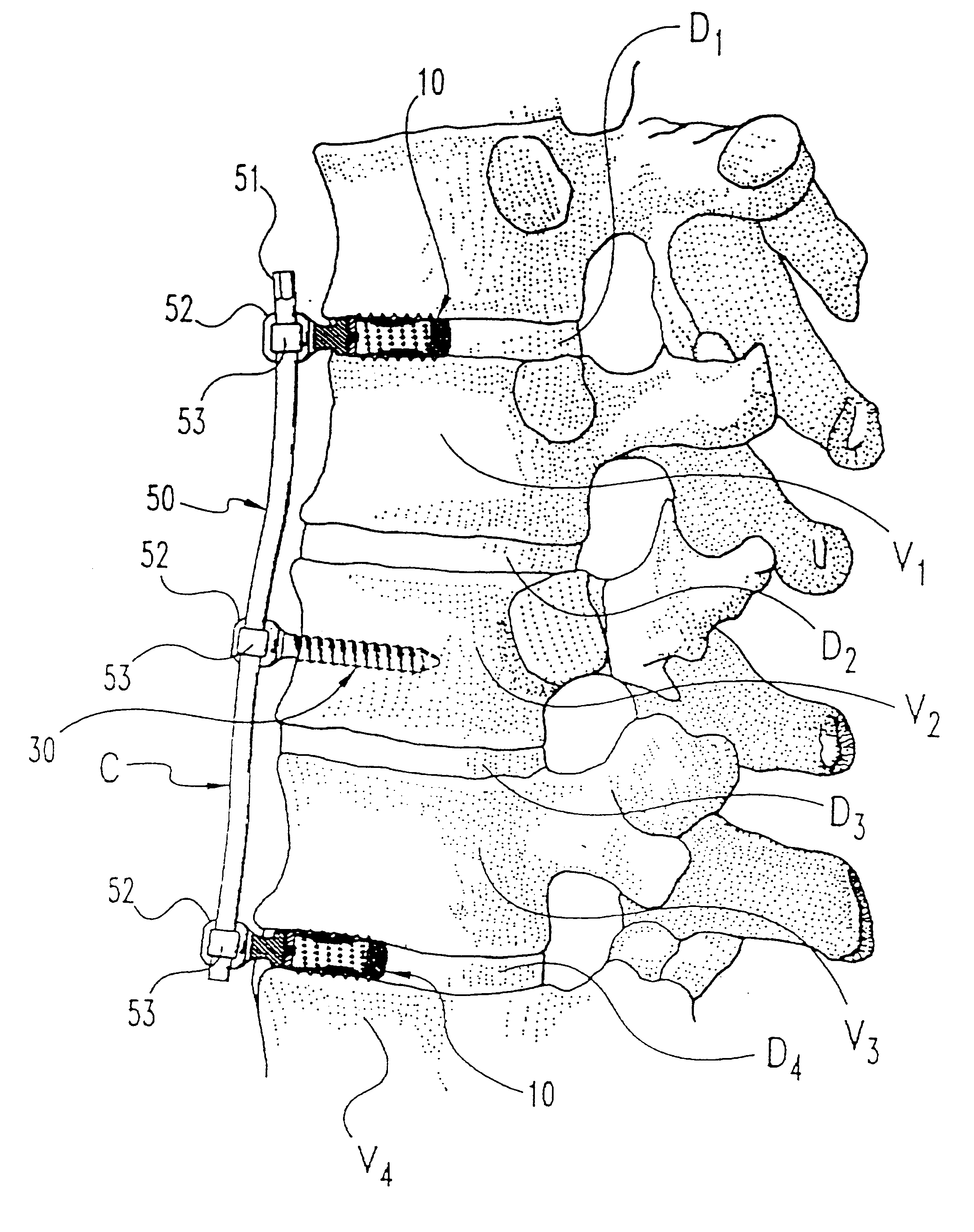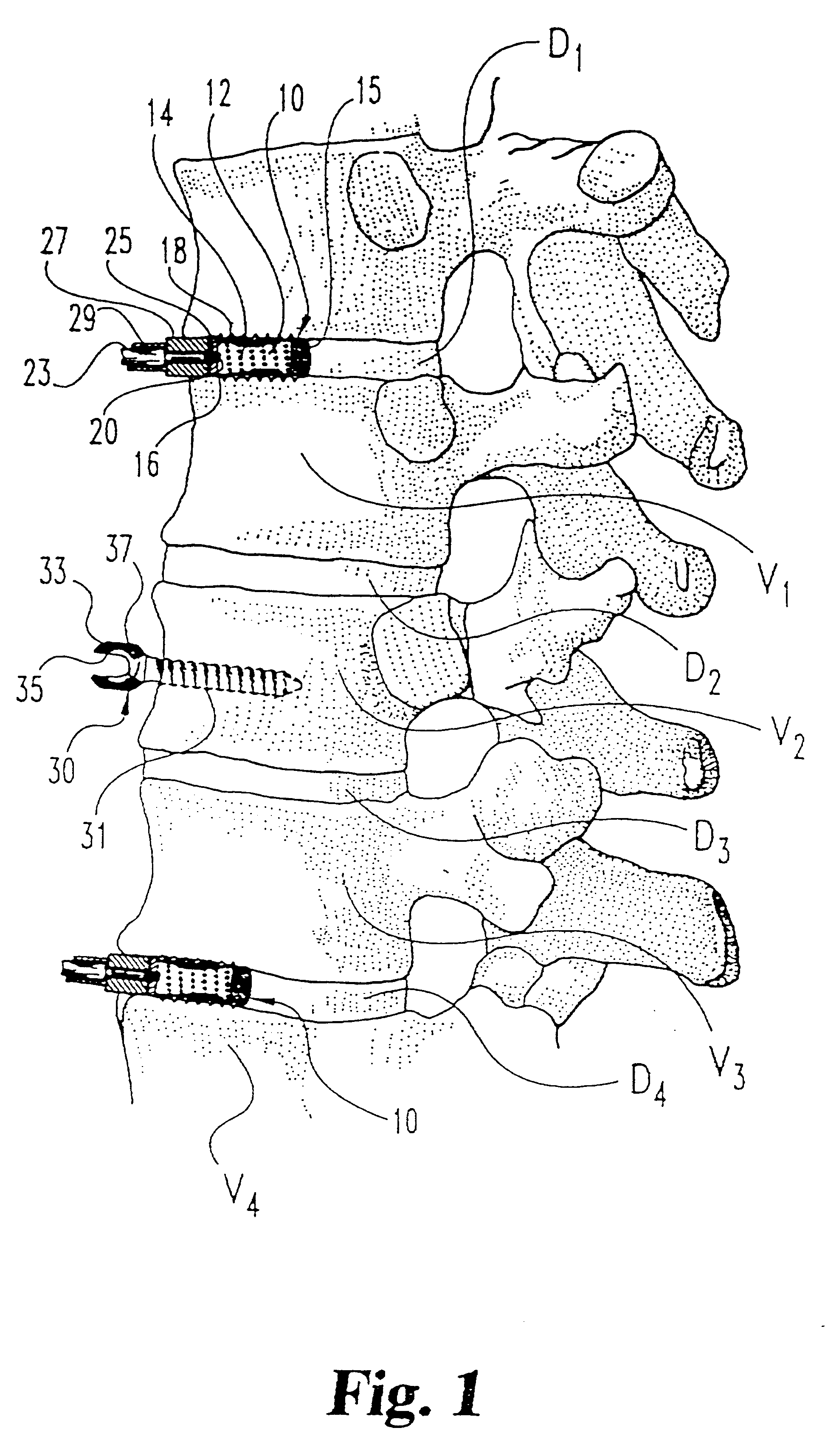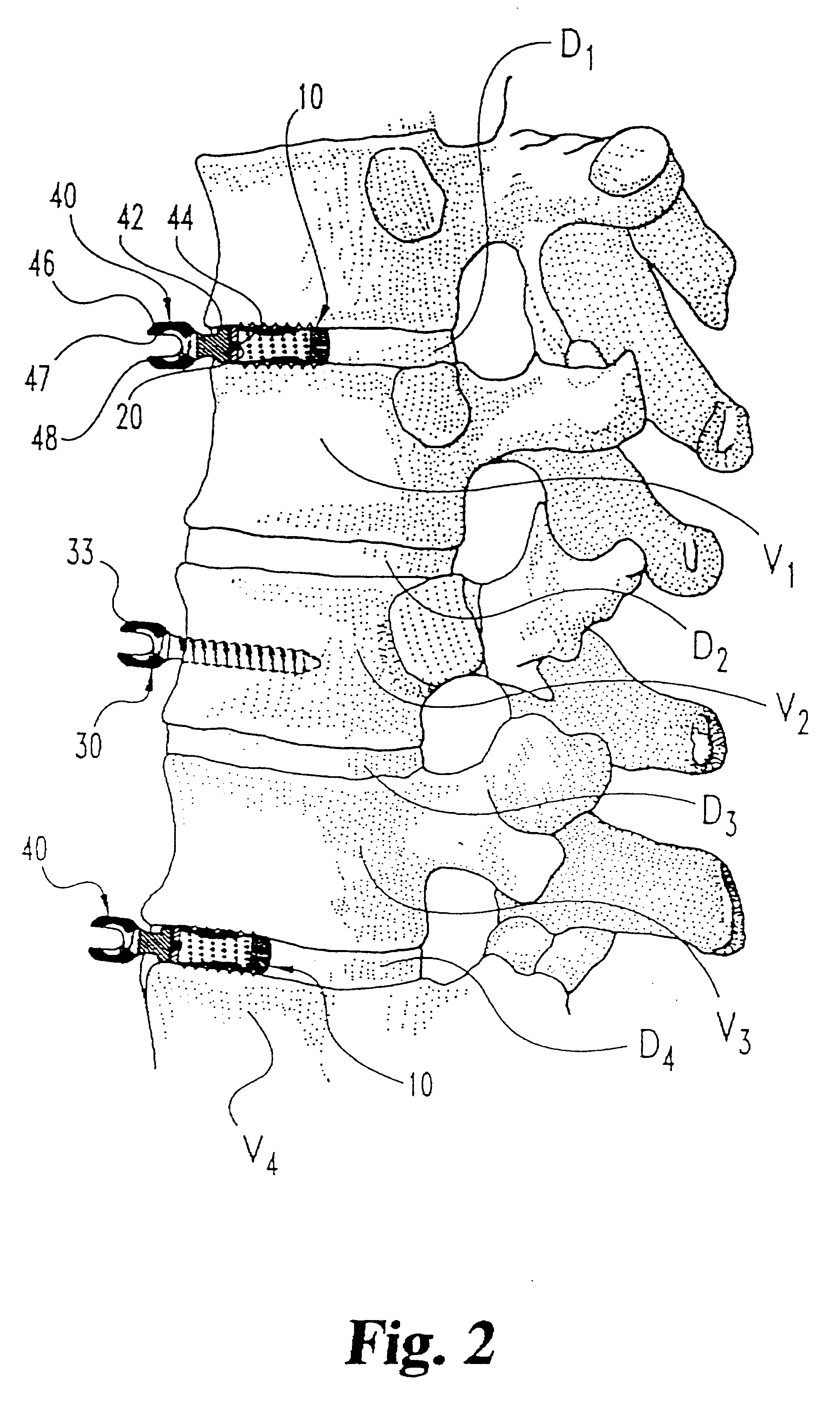Anterior spinal instrumentation and method for implantation and revision
a spinal instrument and anterior spinal technology, applied in the field of spinal instrumentation system, can solve the problems of significant compromise of vertebral body, loss of reduction or correction, and loss of correction, and achieve the effect of enhancing rigidity and fixation, and more reliable and complete decompression of spinal canals
- Summary
- Abstract
- Description
- Claims
- Application Information
AI Technical Summary
Benefits of technology
Problems solved by technology
Method used
Image
Examples
Embodiment Construction
For the purposes of promoting an understanding of the principles of the invention, reference will now be made to the embodiments illustrated in the drawings and specific language will be used to describe the same. It will nevertheless be understood that no limitation of the scope of the invention is thereby intended, such alterations and further modifications in the illustrated device, and such further applications of the principles of the invention as illustrated therein being contemplated as would normally occur to one skilled in the art to which the invention relates.
Referring now to FIG. 1, initial steps of the surgical technique contemplated by the present invention are illustrated. In particular, the invention contemplates anterior fixation of several vertebral segments, identified as vertebra vertebrae V.sub.1 -V.sub.4 and their adjacent discs D.sub.1 -D.sub.4. This anterior instrumentation could be used, for instance, to correct a lumbar scoliosis condition followed by fusio...
PUM
 Login to View More
Login to View More Abstract
Description
Claims
Application Information
 Login to View More
Login to View More - R&D
- Intellectual Property
- Life Sciences
- Materials
- Tech Scout
- Unparalleled Data Quality
- Higher Quality Content
- 60% Fewer Hallucinations
Browse by: Latest US Patents, China's latest patents, Technical Efficacy Thesaurus, Application Domain, Technology Topic, Popular Technical Reports.
© 2025 PatSnap. All rights reserved.Legal|Privacy policy|Modern Slavery Act Transparency Statement|Sitemap|About US| Contact US: help@patsnap.com



